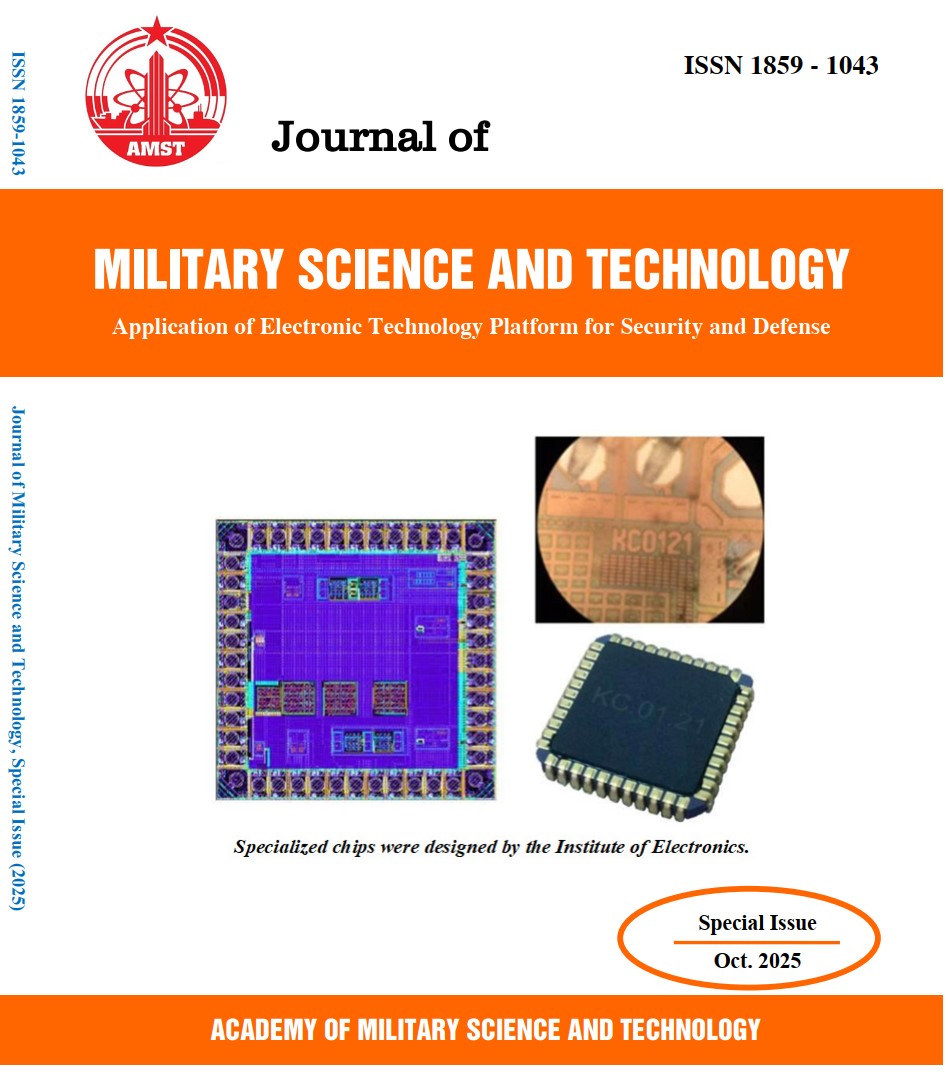Research and evaluation of underwater acoustic signal classification capability using quantum K-mean algorithm on real dataset
194 viewsDOI:
https://doi.org/10.54939/1859-1043.j.mst.IITE.2025.19-26Keywords:
Quantum computing; Passive sonar; Q-mean; K-mean.Abstract
In the big data era, traditional machine learning algorithms like K-means face computational challenges in processing large, high-dimensional datasets, particularly for underwater acoustic signal classification. This study investigates the application of the quantum clustering algorithm Q-means, a quantum-enhanced variant of K-means, to real passive sonar datasets. The purpose is to evaluate Q-means' effectiveness in classifying propeller-driven ship signals under noisy conditions, leveraging quantum principles such as superposition and entanglement for exponential speedup. The research extends classical K-means to δ-k-means for robustness, implementing quantum subroutines including distance estimation, cluster assignment, and state tomography. Preprocessed features from power spectral density analysis of real datasets (from prior studies on varying ship speeds) are used as input to avoid issues with raw time-series data, such as high dimensionality and sensitivity to shifts. Simulations on 15,000 passive sonar samples demonstrate that Q-means achieves clustering quality comparable to K-means, with clear separation of three clusters and accurate centroids, while reducing complexity from O(n) to O(polylog(n)). This validates Q-means as a promising tool for large-scale, noisy acoustic data in national security applications, bridging quantum theory with practical machine learning.
References
[1]. Montanaro, Ashley. "Quantum algorithms: An overview", Quantum Information Nature, 2.1, 1–8, (2016). DOI: https://doi.org/10.1038/npjqi.2015.23
[2]. Theocharidis, Theocharis, and Ergina Kavallieratou. "Underwater communication technologies: A review", Telecommunication Systems, 88, 2, 54, (2025). DOI: https://doi.org/10.1007/s11235-025-01279-x
[3]. Bohm, David. "Quantum theory", Courier Corporation, (1989).
[4]. Ahmad, Izhar. "K-mean and K-prototype algorithms performance analysis", International Journal of Computer and Information Technology, 3, 4, 823–828, (2014).
[5]. Liu, Mingqian, et al. "Intelligent passive detection of aerial target in space-air-ground integrated networks", China Communications, 19, 1, 52–63, (2022). DOI: https://doi.org/10.23919/JCC.2022.01.005
[6]. Bach, Hoang Nhat, Duc Van Nguyen, and Ha Le Vu. "Enhancing the capacity of detecting and classifying cavitation noise generated from propeller using the convolution neural network", International Conference on Industrial Networks and Intelligent Systems, Cham: Springer International Publishing, (2021). DOI: https://doi.org/10.1007/978-3-030-77424-0_22
[7]. Bach, Nhat Hoang, et al. "Classifying marine mammals signal using cubic splines interpolation combining with triple loss variational auto-encoder", Scientific Reports, 13, 1, 19984, (2023). DOI: https://doi.org/10.1038/s41598-023-47320-4
[8]. Dalzell, Alexander M., et al. "Quantum algorithms: A survey of applications and end-to-end complexities", arXiv preprint arXiv:2310.03011, (2023).







